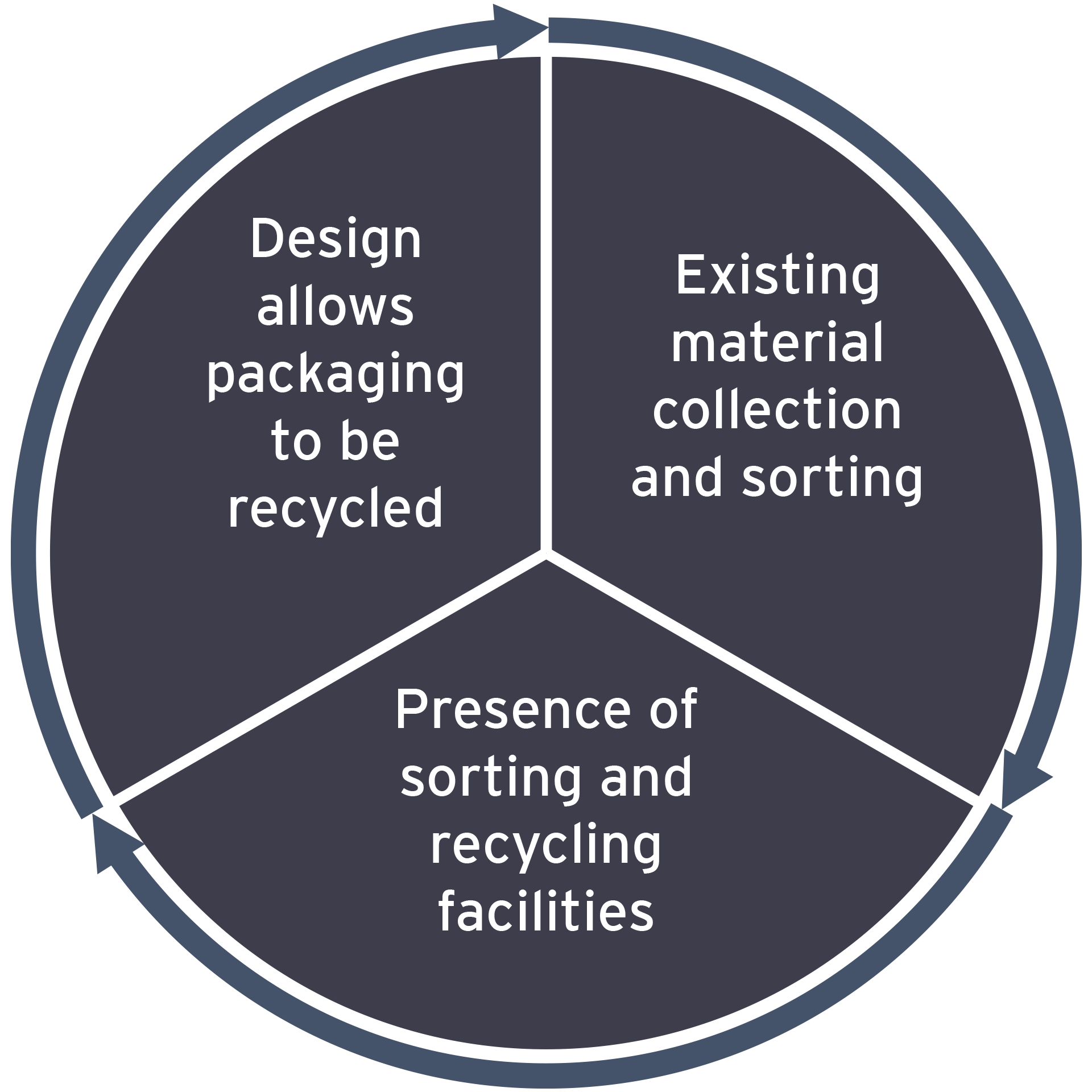This means that recyclability is based on a twofold logic that can be assessed by the producers: packaging is recyclable if the technical and logistical criteria are met.
Technically, producers should make sure that the materials used in the packaging components meet the technical standards (e.g. from the Producer Responsibility Organization of the country, industry guidelines and national legislations) regarding the choice of composition, inks, additives, density, etc. before putting packaging on the market. For example, design for recycling implies avoiding multilayer composite materials that cannot easily be separated from each other, or not using dark and opaque colors, favoring EuPIA-compliant printing inks, etc.
Packaging also needs to be recyclable logistically, meaning that collection and sorting or processing infrastructure needs to be in place that enables industrial-scale recycling in the country.
Today, there is still a lack of a common EU claim on recyclable packaging, essentially due to the differences between member states in terms of level of infrastructure for collection, sorting and recycling and the associated technical standards. This means that certain packaging can be recycled in one member state but not in another, because of the non-harmonization in recycling capabilities. For example, PET trays or PP packaging are recyclable as their recovery systems allow the full reprocessing of the resin. However, it may be deemed non-recyclable in a country lacking the necessary structures to permit proper collection, sorting and/or recycling. Therefore, if the packaging is classified as recyclable, this refers to a clearly defined geographical zone and application period.
Accordingly, packaging could not be claimed recyclable in a country where it does not meet the local standards and/or it is not separately collected for recycling. Producers should indeed be careful with their recyclability claims and verify the local technical and logistical criteria to avoid unintentional greenwashing. In some countries, this verification is already a compliance matter due to the mandatory labeling of sorting instructions and/or recyclability (e.g. in France and Italy). Soon, it is expected that such logos will be mandatory across the entire EU.




